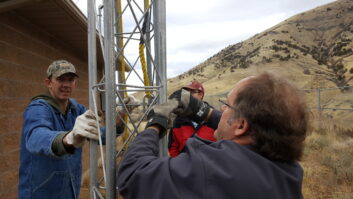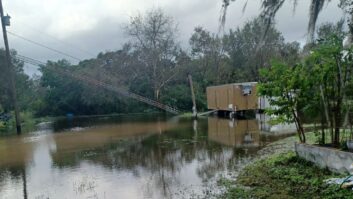In the first three parts of this series, we outlined the scope of small power generators, how they do what they do, general factors (plus and minus) that affect their performance, the criteria for sizing and optimal type and, finally, a typical operational circumstance.
In this installment, let’s wrap up our initial take on this broad and minutia-filled subject, add important details and highlight salient points.
As an overly serious technocrat kid (now known as a nerd), I read Willey Ley’s seminal tome “Rockets, Missiles and Space Travel” (1958). Ley, a scientist/engineer/physicists/writer/educator, contributed greatly to the science of rocketry and space travel technology; the crater Ley on the far side of the moon is named in his honor.

In his book, Ley highlighted that one of the most painful lessons to be learned in the nascent rocket effort of World War II was that if you wanted the rocket to work one time perfectly, you had to design and build it to work 1,000 times! Similarly, if you want your generator to work when needed on those rare, demanding emergency occasions, you have to implement that little power plant as if it has to work 1,000 times.
The necessity for planning and testing cannot be over-emphasized.
MOVING TARGET
Before you contemplate or purchase a small generator, remember that its connection and use is regulated mainly by the National Electric Code (NEC) — wire size and type, grounding and more. Many specific details are in Article 445 – Generators.
An aspect of paragraph 445.18 that will affect your use is that if the typical three-contact twist-lock connector is your means to disconnect the generator, that connector has to be fully functional. You cannot epoxy cement that assembly together; no screws holding the connector down; no hard wiring to the back of the connector; etc. Your generator must have a quick and decisive disconnect.
In 445.20, if you also use that same twist-lock for connection, any GFI protection in the unit has to be disabled. Confirm this feature before you buy.
The NEC changes every three years, so best to read up on the current official version in your area or check with your local building inspector regarding your plans to avoid expensive purchase errors.
Covered extensively in previous parts of this series, the difficulty of certain UPS supplies to operate properly on generators is well recognized.
All of us have seen or heard from cohorts of UPS supplies ignoring the presence of generator power because of a deficient waveform coming in from the generator.
A full-load test (think of this as a dress rehearsal) is the time to make absolutely certain that all the gear (including any UPS needed to bridge the outage or maintain data) will work properly, together and simultaneously on your generator.
The one item that you should not fail to include in your basic station emergency gear is a small HDTV set capable of over-the-air reception. With this little window on the world, you can stay abreast of pending weather, the progress of power restoration and news/information useful to your listeners from other sources. Most of these appliances are waveform-sensitive (switching power supply), so make certain it is tested with everything else. Cable is not as durable as broadcasting, so an outside antenna that is high-wind survivable and pre-aimed for all local stations is a prudent investment.
From my experience during the crisis of 9/11, while installing this HDTV, also bring out the audio to a patch or some convenient access point for both air and production. Every disaster is different, and you never know when you will need to air a complicated medical announcement, a detailed evacuation order or even a warning addressing a poisonous rutabaga! These important local announcements might be more readily available via a TV station source and are especially comforting and compelling to your listeners when they come directly from the lips of the officials in charge.
Remember that if your community is in a disaster, broadcasting works together, not in competition. Exchanging and broadcasting factual information by all means to help those affected is the rule of the day in these times. That’s what we do when the going gets tough.
LOAD LOGIC
Remember that “load logic,” or evaluating each necessary item of gear to optimize the value of every watt coming from the generator, should also extend to what not to put on it.
As tempting as it may be, do not attach intermittent high-surge items on a small generator if you want to avoid erratic operation.
What immediately comes to mind (since I’ve seen them do damage) are HPS or HID lights that have notably high surge demand when they are struck. The high current demand to draw the first arc will drastically load and consequently slow the generator, dropping the voltage with real debilitating performance results.
Other culprits include motor loads, such as the big garage door opener or the compressor in even the smallest window AC on a hot day.
On the engine side, we previously covered fuel and, more specifically, the choice of either gasoline or LP.
As most of our discussion has been about portable (carry or roll about) small generators, the fuel focus has been gasoline and prudent limited local storage.
If your outage grows long, you’ll have to augment that on-site fuel. Once again, in advance, ascertain what fuel stations will be operating in an extensive outage (probably on their own generator) and set your needs up as a priority. You want your radio station to be treated as the effective first community responder that you are.
You don’t want to have to wait in line for hours and you don’t want to be without. Set it up in advance.
HALF-LIFE
I have always promulgated that the technology half-life of broadcasting is five years. Half of what we learn today, half of what we buy today, will be worthless in five years.
Futurists inform us that almost universally, the rate, the speed of change, is accelerating in every field of endeavor … in every facet of our lives. That five-year window in our own industry has begun to get shorter.
Common logic dictates, then, that general education and preparational training should focus on basics, not specifics. Details will change … basic universal elements will remain and be of a greater assistance in critical thinking and decision-making than the current “big thing.”
With that in mind, to close out this article series, let’s run over the valuable basics you should take away concerning small generators that should not change.
• Carefully and precisely ascertain your goals, the gear you need, the power required to supply that gear (including power factor).
• With this information, select a power level, add a margin for aging and less than perfect circumstances.
• Buy the best quality you can afford … audition the generator under the complete load if possible.
• Plan thoughtfully and test your operational layout in advance. Exercise regularly (engine run once a month, full load every six as a minimum).
• Have adequate “fresh” fuel and store it safely. Follow all safety precautions.
PARTS ON HAND
To have handy during generator operation:
First, a suitable (at least ABC type), five-pound or larger fire extinguisher should be nearby whenever you run the generator or handle fuel.
Spares: ideally two of each filter (fuel, air and oil), a new spark plug, a couple quarts of oil, disposable funnels for fueling and oil service, gloves, flashlight (as it will be dark at night when the power goes out initially and whenever the generator shuts off).
My thanks for patiently reading along through this comprehensive overview series on small power generations. If we’ve left anything out, let us know and we’ll share with our readers. If you have questions or need clarification, please email me via our Tech Editor Cris Alexander at rweetech@gmail.com.
Read the other parts of Buc’s discussion on small generators:
Part I — The Good, the Bad and the Noisy
Part 2 — Sizing and Selection: the Big Picture of the Small End of Power Generation
Part 3 — Pragmatics 101: The Big Picture of the Small End of Power Generation







